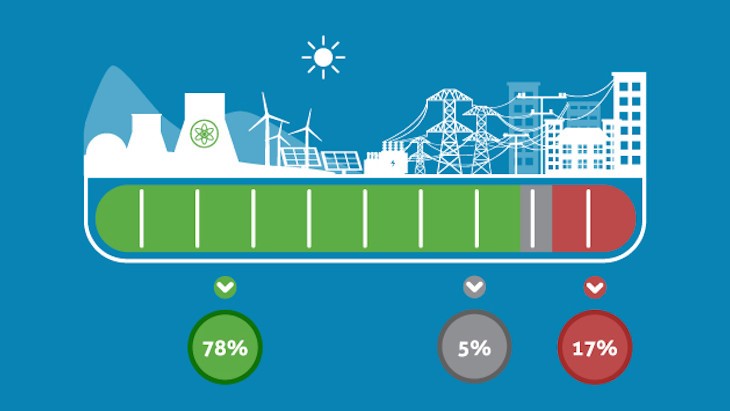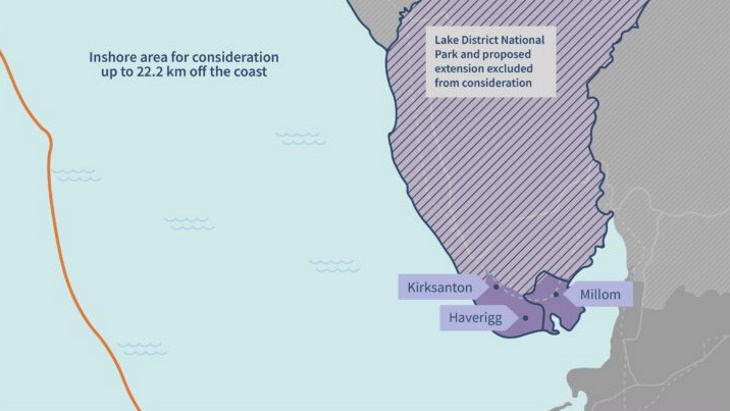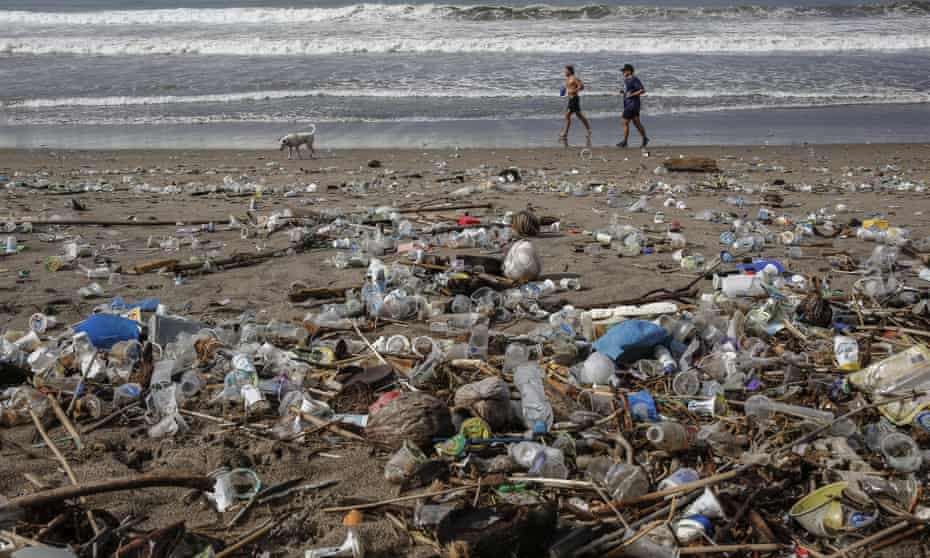NUKE NEWS
Nuclear makes a comeback in the Netherlands
15 December 2021
The Netherlands' new coalition government has placed nuclear power at the heart of its climate and energy policy. Some EUR500 million (USD564 million) has been earmarked to support new nuclear build in the period to 2025.
.jpg?ext=.jpg) Borssele, the Netherlands' only operating nuclear power plant (Image: EPZ)
Borssele, the Netherlands' only operating nuclear power plant (Image: EPZ)"We want to make every effort to keep our country and our planet liveable and habitable," wrote the VVD, D66, CDA and ChristenUnie parties. Today they released the coalition's plans for the period to 2025 as the result of negotiations that began after the general election in March.
"Nuclear energy can complement solar, wind and geothermal energy in the energy mix and can be used to produce hydrogen," the document said. "It also makes us less dependent on gas imports."
"That is why the nuclear power plant in Borssele will remain open longer, with due regard for safety," said the government. The 482 MWe single-unit plant has operated since 1973 and meets around 3% of the country's electricity needs.
"This government is also taking the necessary steps to build two new nuclear power stations," the policy continued. "This means, among other things, that we will facilitate market parties in their explorations, support innovations, invite tenders, review the government's contribution (financial and otherwise), and put legislation and regulations in order where necessary."
Accordingly, the government said it would provide financial support to the goal of building new nuclear power plants. It outlined EUR50 million (USD56 million) for this in 2023, EUR200 million in 2024 and EUR250 million in 2025.
It anticipated that cumulative support for new nuclear would reach EUR5 billion by 2030, while not assuming the power plants would be online by that time.
This nuclear investment will support higher ambition on climate. "In order to be climate-neutral by 2050 at the latest, we are raising the 2030 target in the Climate Act to at least 55% CO2 reduction," the policy said. "In order to meet this target, we have agreed to focus our policy on a higher target, which is around 60% in 2030." Subsequent goals are a 70% reduction in CO2 emissions by 2035 and 80% by 2040.
Elsewhere in the energy sector, the government will support wind deployment while focusing solar deployment on rooftops rather than open land. Gas production will be phased out in Groningen and the government will not issue new licences for production in the Wadden Sea, close to the coast. Gas production in the North Sea will be supported because it reduces imports. The use of woody biomass will be restricted to fuels sourced within the EU so that its sustainability can be closely monitored.
Polish support for nuclear on a high
15 December 2021
Support for nuclear energy in Poland is overwhelming with 78% of people supporting the technology as a response to climate change, according to opinion polling. It comes as the country experiences a series of developments towards nuclear deployment.
 Nuclear energy is strongly supported in Poland, with few undecided (Image: Polish Ministry of Climate and Environment)
Nuclear energy is strongly supported in Poland, with few undecided (Image: Polish Ministry of Climate and Environment)
"These are the best results in the history of research carried out since 2012," said Poland's Ministry of Climate and Environment, which commissioned the annual poll. The market research company DANAE used the CATI method to find the views of a representative group of 2148 people aged 15 to 75 years of age during November.
Results indicated that 74% of people support nuclear power plants in Poland, with 20% opposed. This was an increase in support of 11%, the government noted.
A similar increase was found among people who would be supportive of a nuclear power plant in their area. Some 58% said they would support this, up from 46% last year, with 39% opposed.
These results come in the context that 80% of respondents said they had heard of plans to introduce nuclear power to Poland.
Constructing nuclear power plants in Poland was "a good way of fighting climate change" agreed 78% of people, with only 17% in disagreement.
A large majority of 82% said that building nuclear power plants would be a good way to increase Poland's energy security, which the government noted was up 9% from last year.
Energy prices have been high across Europe through the last quarter of 2021 as the economic recovery from the COVID-19 pandemic collided with low stocks of gas. At the same time, Poland has seen a series of positive developments in nuclear energy.
Run of developments
In September it was announced that six new large reactors could be built by 2040 as part of Poland's plan to reduce its historic heavy reliance on coal, which is incompatible with climate commitments. EDF of France submitted an offer to supply six large EPR reactors in October, and Westinghouse has stepped up its engineering centres in Poland.
Separately Polish heavy industry is embracing small reactors as a way to avoid burning coal for process heat and power. Chemical producer Synthos has established a subsidiary which has right to develop projects around GE-Hitachi's BWRX-300, and is working with chemical producers PKN Orlen and Ciech on the potential for the BWRX to replace coal at their plants. Synthos is also working with power company ZE Pak to examine whether BWRX-300s could replace coal at the Pątnów power plant.
NuScale is working with liquid fuel supplier Unimot and USA-based Getka to explore whether its power modules could be used instead of coal. NuScale also has a similar project with KGHM Polska Miedź SA and Piela Business Engineering.
THEY WILL DUMP RADIOACTIVE WASTE WATER INTO LAKE MICHIGAN
Licence transfer expands Holtec decommissioning fleet
15 December 2021
The US Nuclear Regulatory Commission (NRC) has approved the transfer of the licences for the Palisades nuclear power plant from Entergy Nuclear Operations Inc to Holtec International following the plant's retirement next year. Holtec plans to take control of the Michigan plant and begin its decommissioning with a month of its retirement.
.jpg?ext=.jpg) The Palisades plant on the shores of Lake Michigan (Image: Holtec)
The Palisades plant on the shores of Lake Michigan (Image: Holtec)
Holtec said it looks forward to completing the ownership transfer from Entergy in mid-2022 when it will "assume ownership of the site, real property and all nuclear waste, including used nuclear fuel." The licence transfer also includes Palisades' independent spent fuel storage installation (ISFSI) - an associated facility where some of the plant's used fuel is in dry storage - as well as the licences for the decommissioned Big Rock Point nuclear power plant and its associated used fuel storage facility.
A new subsidiary called Holtec Palisades will be the owner of the site, while Holtec Decommissioning International (HDI) will be the operator and therefore responsible for nuclear safety as it is decommissioned. Holtec said it uses a fleet management model across the Oyster Creek, Pilgrim and Indian Point sites it is in the process of decommissioning.
Palisades is an 805 MWe pressurised water reactor, which has operated for 50 years. Big Rock Point operated from 1962 to 1997. It is fully decommissioned and only the dry fuel storage facility remains.
Entergy in 2018 agreed to sell the Pilgrim nuclear power plant, in Massachusetts, and Palisades to Holtec after their closures. Pilgrim shut down for the last time on 31 May 2019, and Holtec completed its acquisition of the plant in August of that year. Holtec plans to decommission Pilgrim (with the exception of the ISFSI) on an eight-year schedule to permit NRC partial site release.
"The ongoing dose, safety, and environmental protection metrics garnered by Holtec Decommissioning provide definitive proof that the dismantling of a nuclear plant can be a non-intrusive societal presence and an environmentally safe undertaking," the company said.
Palisades is scheduled to shut down on 31 May 2022. Holtec and Entergy expect to conclude the transaction by 30 June, and Holtec plans to move all the fuel in the plant's used fuel pool into dry cask storage within three years of shutdown. NRC's order approving the licence transfer is effective immediately, but the transfer will not be finalised until after the plant's permanent shutdown and the completion of the transaction between Entergy, Holtec and HDI, NRC said.
Separately, Holtec International is developing a small modular reactor called SMR-160. It said in November it is "actively exploring the possibility" of deploying an SMR-160 at Oyster Creek as well as its other sites.
Second community partnership forms in Cumbria
14 December 2021
The second of two community partnerships has been formed in Copeland, Cumbria, UK, to take forward discussions around siting a geological disposal facility (GDF) for high-level radioactive waste. Following the formation of the Mid Copeland GDF Community Partnership last month, neighbouring South Copeland has now put itself forward as a possible host for the facility.
 The South Copeland search area (in solid purple) identified by the Copeland GDF Working Group for consideration (Image: RWM)
The South Copeland search area (in solid purple) identified by the Copeland GDF Working Group for consideration (Image: RWM)
As well as Copeland Borough Council and Radioactive Waste Management (RWM), initial membership of the South Copeland GDF Community Partnership also includes local councillors and the Cumbria Association of Local Councils.
South Copeland GDF Community Partnership will now focus further engagement activities in a search area covering the electoral wards of Millom and Black Combe & Scafell.
"The formation of a second Community Partnership in Copeland marks another step forward in the nationwide search to find a willing community and suitable site for a geological disposal facility for the safe and secure disposal of higher-activity radioactive waste," said RWM.
Initially, RWM will explore the potential of deep geology beyond the coast for the underground elements of a GDF, as recommended by Copeland GDF Working Group. This would mean a land-based surface facility could provide access to a disposal area in rock deep below the seabed. The Lake District National Park and proposed extension will not be considered.
Now that two Community Partnerships have formed, the Copeland Working Group comes to an end as it has fulfilled its remit to begin conversations about GDF, identify search areas and identify initial members for Community Partnerships.
Community Partnerships are longer-term groups made up of a larger number of people to consider the possibilities of hosting a GDF within the identified search areas in more detail. Progressing to the formation of Community Partnerships unlocks access to GBP1.0 million (USD1.3 million) per year investment funding for communities, per partnership, for local projects, rising to GBP2.5 million per year if deep borehole investigations to assess geology take place.
"We're delighted to see the formation of another Community Partnership in Copeland. It provides a platform to increase community engagement and trigger investment funding for projects that should really benefit the communities involved," said RWM CEO Karen Wheeler. "We look forward to continuing discussions and beginning investigations in these areas for a site that could be suitable for a GDF."
Construction of a GDF requires both a suitable site and willing community. If a suitable site is eventually found in Copeland - which could take 10-15 years - a Test of Public Support, which would give people a direct say, would be held with those living in the wards affected. Without public support the project would not go ahead.
During an earlier site selection process, two communities in Cumbria - Copeland and Allerdale - had expressed interest in hosting a repository, but the process stopped in January 2013 when the local county council voted against moving to the next stage of the process. A new search for a site was launched in December 2018.
The Allerdale GDF Working Group has identified an area for further investigation covering 320 square kilometres comprising 13 electoral wards of Allerdale Borough Council, as well as an inshore area up to 22.2 kilometres off the coast. The working group has recommended that a community partnership is formed in the borough.
A GDF comprises a network of highly-engineered underground vaults and tunnels built to permanently dispose of higher activity radioactive waste so that no harmful levels of radiation ever reach the surface environment. Countries such as Finland, Sweden, France, Canada and the USA are also pursuing this option.
Opal conducts self-review of safety
14 December 2021
The Australian Nuclear Science and Technology Organisation (ANSTO) has undertaken a review of safety and security performance at the Opal research reactor, saying its future plans are "very much anchored on high standards."
_1.jpg?ext=.jpg) The Opal research reactor at ANSTO's Lucas Heights site (Image: ANSTO)
The Opal research reactor at ANSTO's Lucas Heights site (Image: ANSTO)"Challenging our approach is something we do well at Ansto," said Opal Reactor Manager David Vittorio.
The review looked at Opal managers' performance on 15 safety factors and 19 security factors over the last ten years "to give a view on future performance", ANSTO said. "The outcome provided a strong vote of confidence in Australia’s expertise in nuclear activities and research," it stated in an announcement of the work.
Vittorio said the review "has led to an action plan that will ensure Opal continues to maintain its position as one of the world's best multi-purpose research reactors." More specifically, “the report considered the performance over the past decade and how to sustain and enhance the safety, security and reliability of the reactor over the next decades."
ANSTO said it followed an approach advocated by the International Atomic Energy Agency for the Period Safety and Security Review.
ANSTO CEO Shaun Jenkinson said the oganisation "is the custodian of Australia's most significant national infrastructure for research, and Opal, as the only nuclear reactor in the country, is the centrepiece."
Jenkinson added, “Our future plans to progress cutting-edge developments in nuclear medicine production, research, and partnerships with industry, are very much anchored by the high standards achieved through the safe and secure operation of Opal.”
Opal is a 20 MWt open-pool research reactor that started up at ANSTO's Lucas Heights site, near Sydney, in 2007. It was designed by Invap of Argentina and is the design reference for the Brazil Multipurpose Reactor under construction in that country as well as the RA-10 reactor under construction in Argentina, although those units will be larger at 30 MWt.
In September, the Australian government announced AUD30 million (USD12.8 million) would be spent on the design of a new nuclear medicine manufacturing facility at Lucas Heights. It would replace a facility which is said to be nearing the end of its service life, but has an important role providing up to 12,000 doses of nuclear medicine annually.
Researched and written by World Nuclear News


.jpg?ext=.jpg)




